Research
Research
In the past several years, there has been an increase of research in examining the severity and impact of workplace discrimination facing Asian Americans. The research below can help you process your own work environment and empower you with tools to advocate for change in your company.
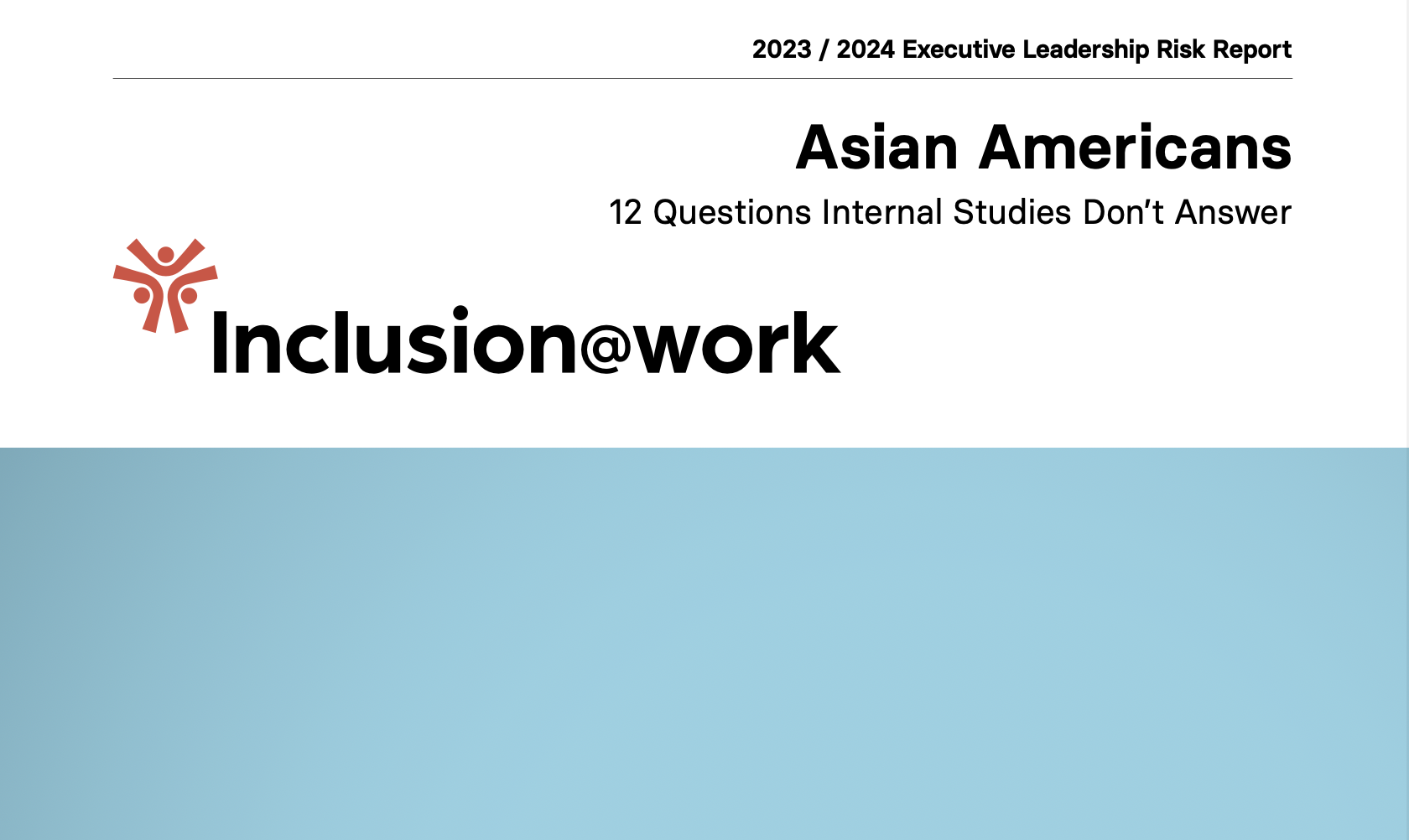
1 in 3 AAPIs have considered a lawsuit against their current or former employer because of identity or background based treatment.
AAPIs considered lawsuits at rates higher than all other workers of color.
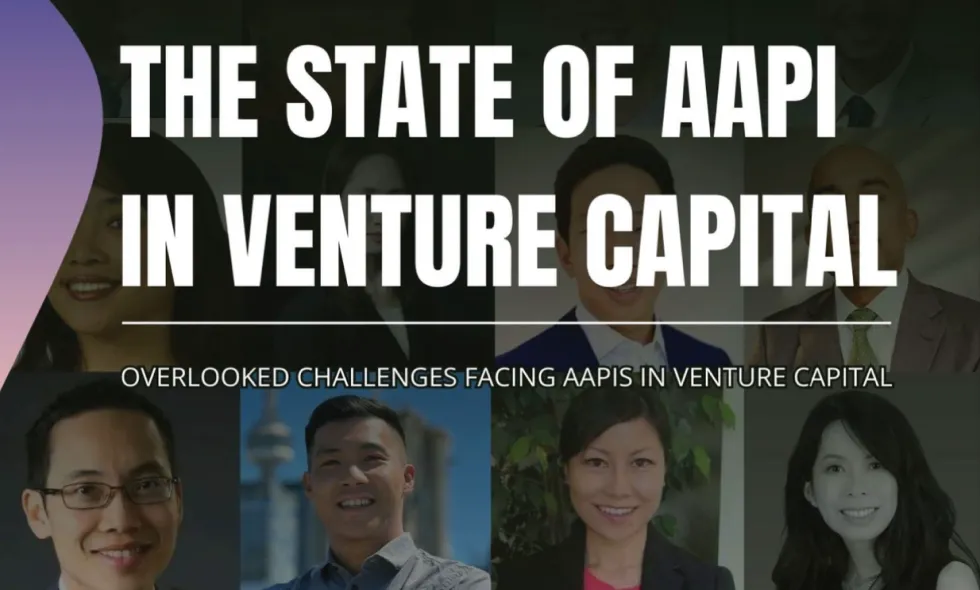
A landmark study conducted by DECODE, UC Berkeley, and AAAIM has revealed significant underrepresentation of AAPI professionals within the venture capital industry, challenging the commonly held perception of inclusivity and diversity. This recent study quantifies for the first time that – despite these perceptions of success and inclusion – AAPIs face a persistent bias within the VC community. There have been several studies looking at systemic imbalance faced by women and other diverse communities in venture capital, but there has been limited research related to the AAPI community.

In an examination of 101 companies, Ascend reports that Fortune 1000s have completely failed to address the gender gap for API women, who remain substantially under-represented as Executives. Their findings are in a new paper titled “What about the Women?” that they released for #WomensHeritageMonth in March which examined the intersectional effects of race and gender in the corporate leadership pipeline. Their review of EEO-1 data finds that at Executive levels API women are represented at rates 40% lower than API men and 126% lower than white women.

As part of our Workplace Justice Initiative, we’ve joined forces with Blind, an anonymous social network that caters mainly to the tech industry, where nine million professionals share advice and discover relevant career information to conduct comprehensive anonymous surveys of thousands of U.S.-based professionals in the tech industry, including at companies like Amazon, Microsoft, Google, Meta, Intel, Cisco, and Apple.
Workplace Survey: Unmasking the Reality of Asian American Discrimination (SwAA, Blind 2023)

78% of Asian adults have been treated as a foreigner in some way, even if they are U.S. born.
63% of Asian adults have experienced incidents where people assume they are a model minority.
68% of Asian adults who grew up in the U.S. say they rarely or never talked with family about the challenges they might face because of their race or ethnicity when growing up.
Discrimination Experiences Shape Most Asian Americans’ Lives (Pew 2023)
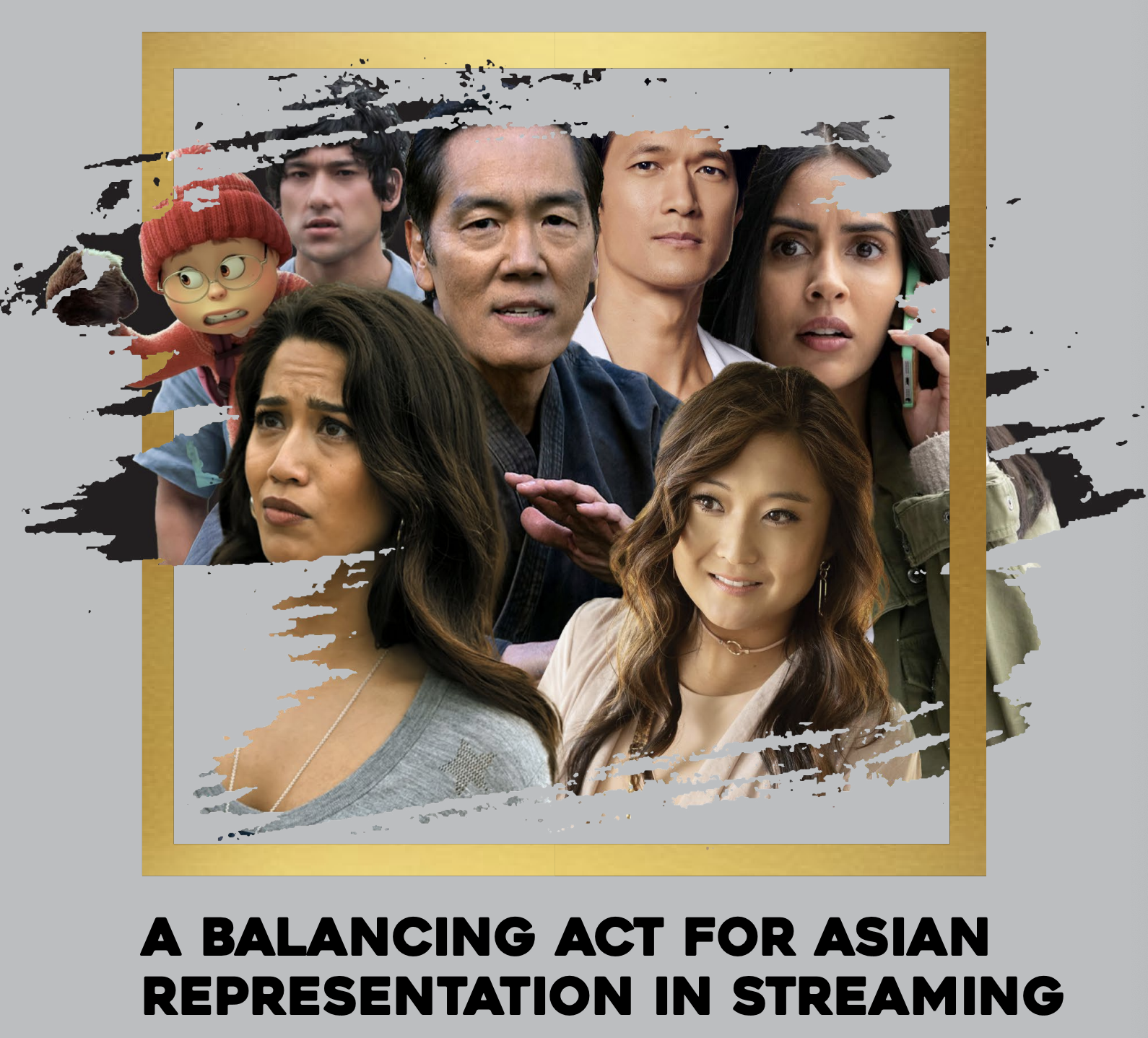
Only 6% of all identified Asian characters were in leading roles.
42% of Asian characters had light skin tones.
53% of Asian women’s love interest were white men.
A Balancing Act for Asian Representation in Streaming (Gold House 2023)
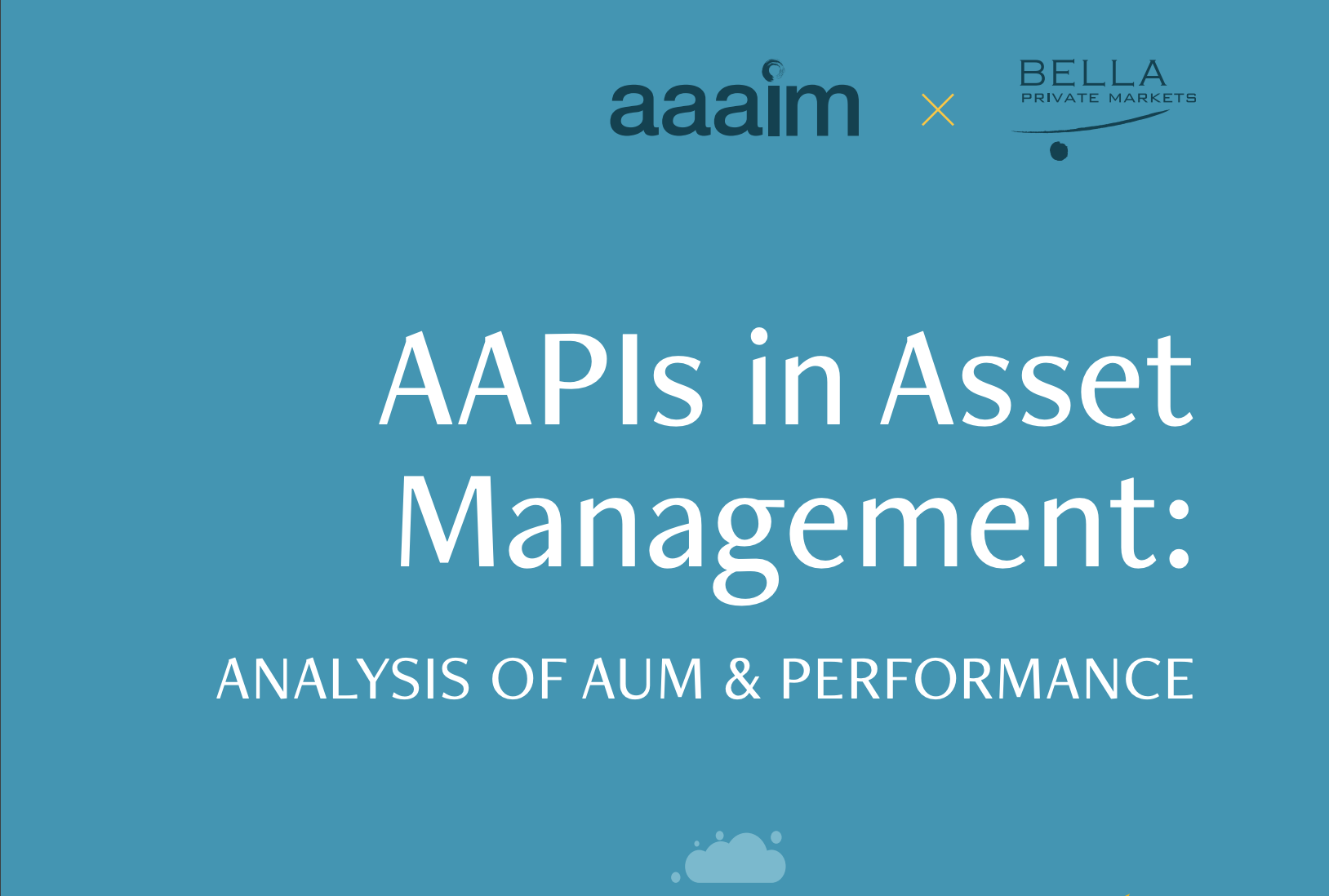
A mere 2.4% of firms, 1.8% of funds, and 0.3% of AUM are AAPI-owned in 2023. These numbers are even lower than from 2020, which found that AAPIs owned 3.5% of firms, 2.9% of funds, and managed 0.7% of AUM.
AAPI-owned funds outperformed non-AAPI-owned funds across most asset classes studied on a capital-weighted average basis
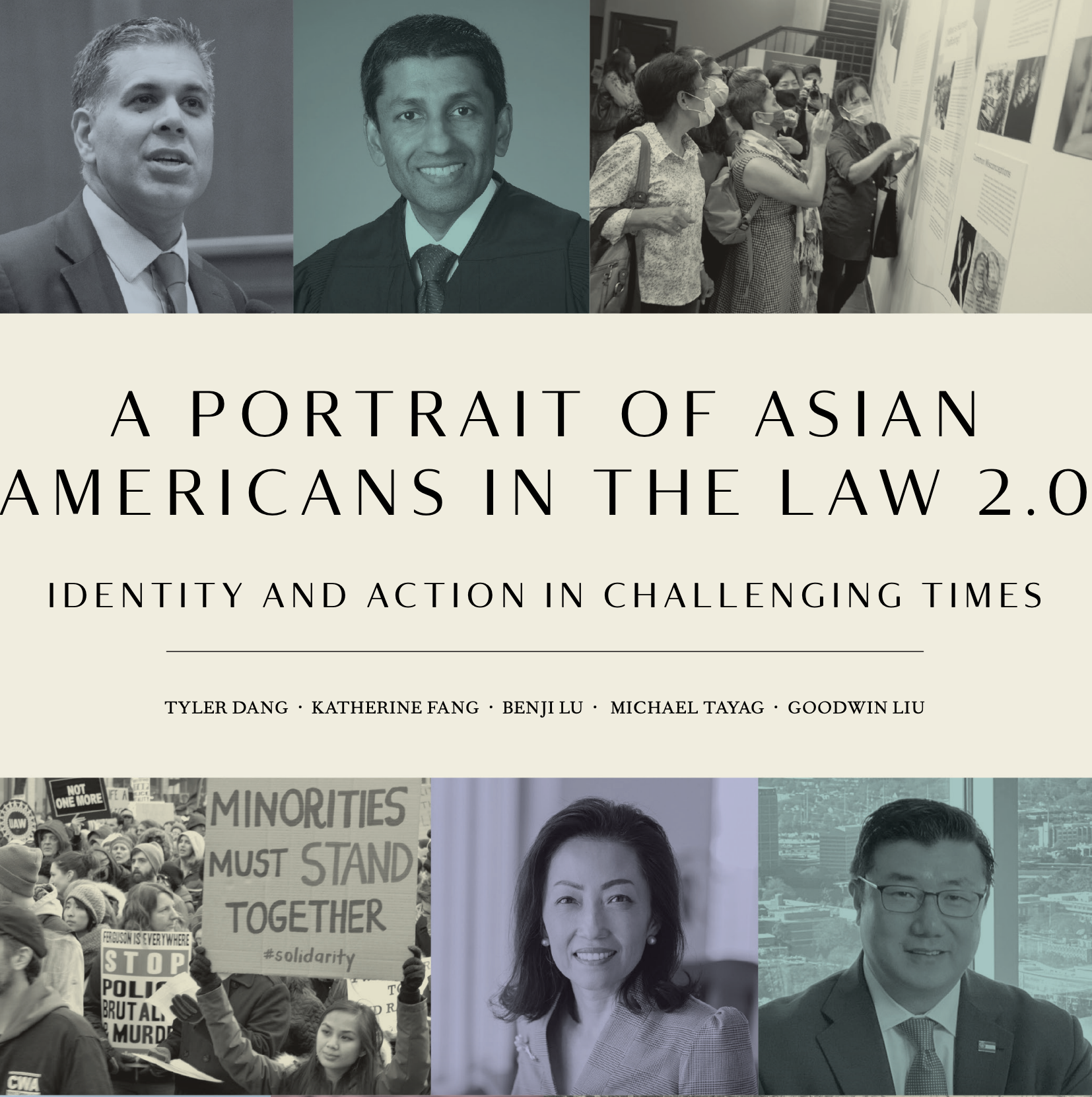
Asian Americans continue to be the largest minority group at major law firms, but they continue to experience the highest attrition. They made up 7.8% of attorneys overall in 2019 but 10.4% of attorneys who left their firms that year. And they have the lowest ratio of partners to associates, as they did five years ago. Only 4.3% of equity partners at major firms in 2020 were Asian American; almost 90% were White.
A Portrait of Asian Americans in the Law 2.0 (ABA, NAPABA 2022)
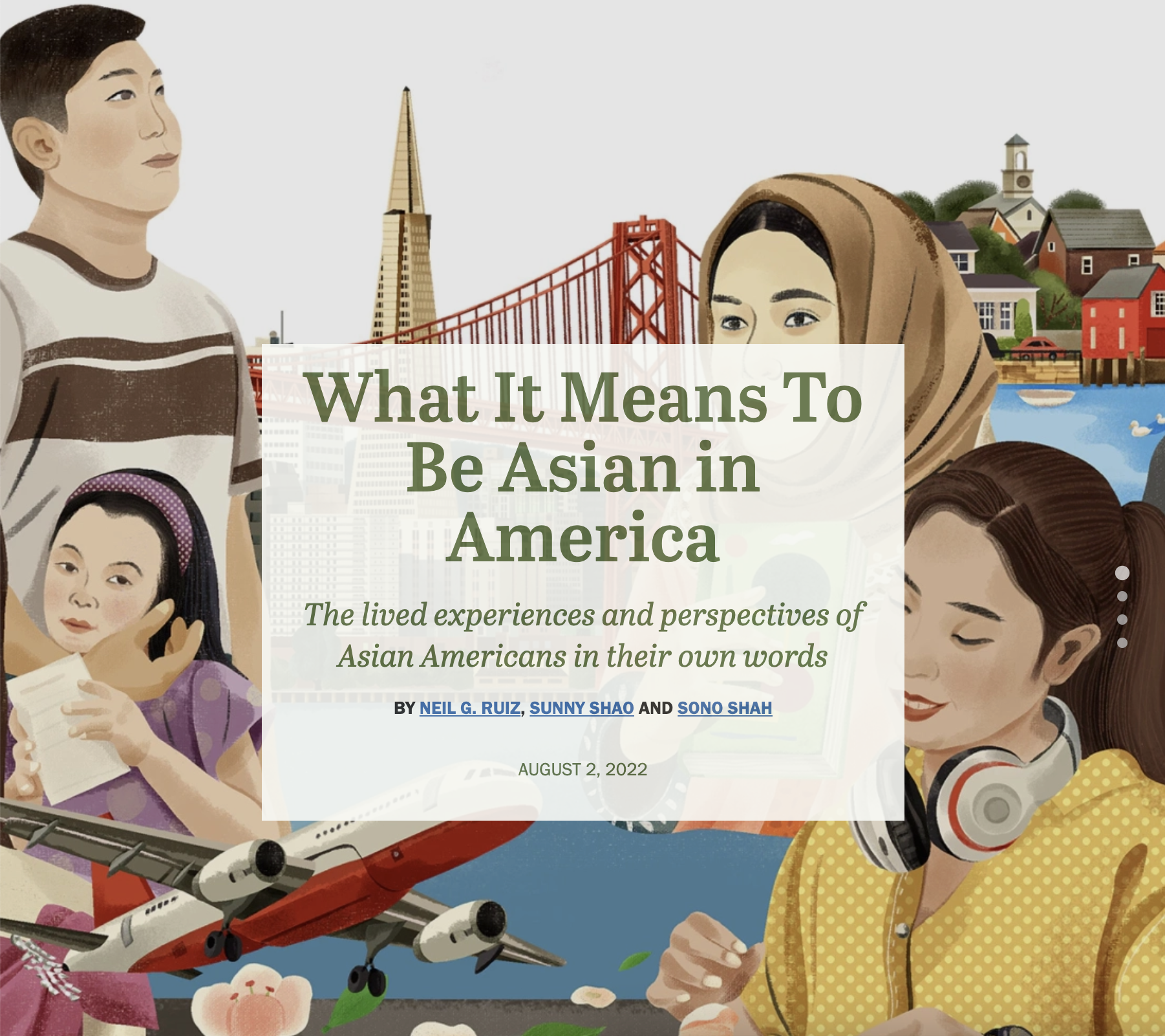
Asians are the fastest growing racial and ethnic group in the United States. More than 24 million Americans in the U.S. trace their roots to more than 20 countries in East and Southeast Asia and the Indian subcontinent.
The majority of Asian Americans are immigrants, coming to understand what they left behind and building their lives in the United States. At the same time, there is a fast growing, U.S.-born generation of Asian Americans who are navigating their own connections to familian heritage and their own experiences growing up in the U.S.
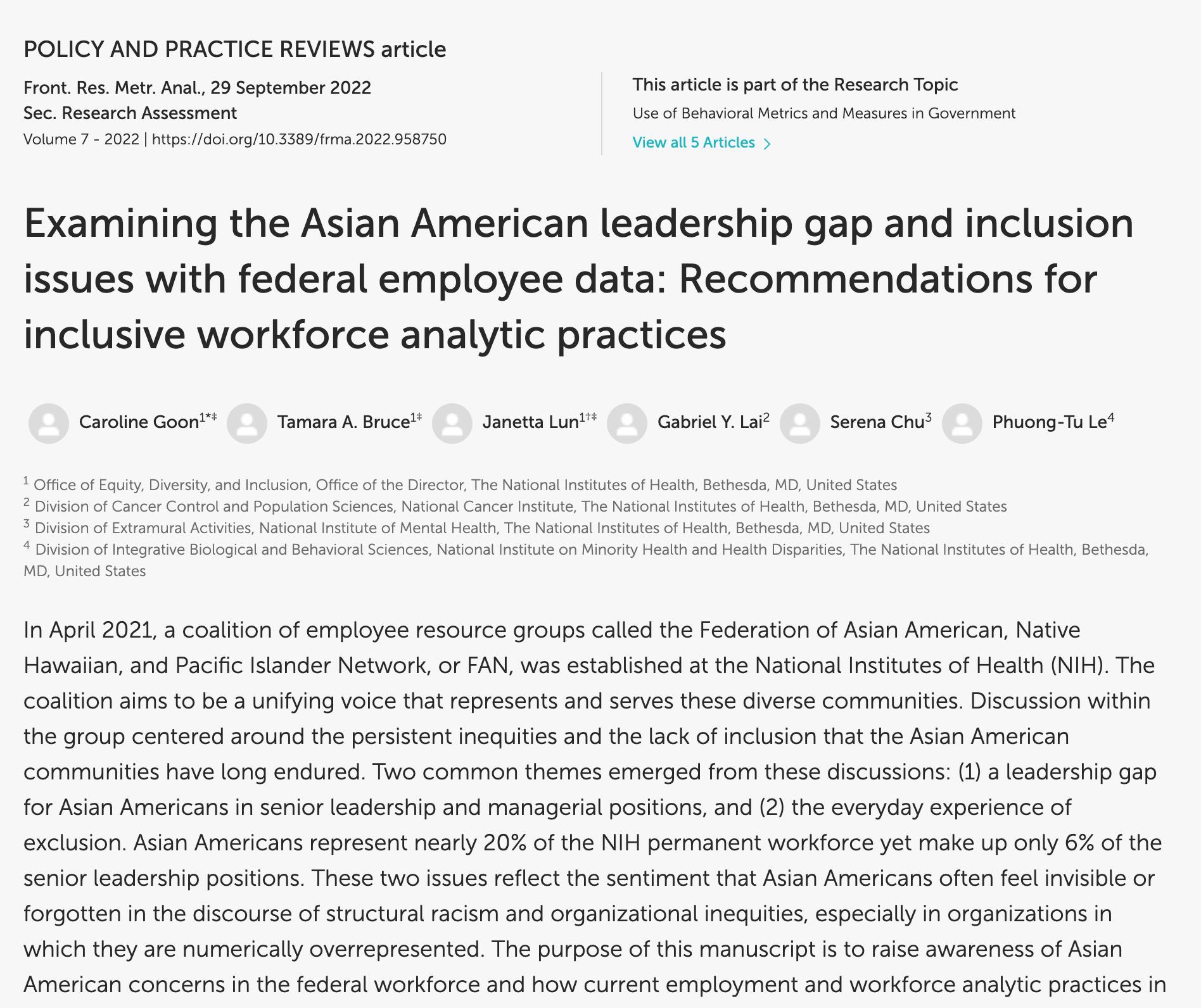
Asian Americans represent nearly 20% of the NIH permanent workforce yet make up only 6% of the senior leadership positions. These two issues reflect the sentiment that Asian Americans often feel invisible or forgotten in the discourse of structural racism and organizational inequities, especially in organizations in which they are numerically overrepresented.
Examining the Asian American leadership gap and inclusion issues with federal employee data

White doctors were more than four times as likely as their Asian American colleagues to be promoted to medical school department chair positions in a wide array of medical specialties, and that Black and brown doctors were more than twice as likely as Asians to be promoted.
The racial makeup of U.S. medical school deans posted by the Association of American Medical Colleges, … shows white and Asian American doctors have held more than 90% of medical school dean positions for the last 30 years, which makes it appear there are large numbers of Asian American deans.
But there are not. A study published in 2013 found not a single Asian American medical school dean in the United States between 1997 and 2008.
Asian American doctors, overrepresented in medicine, are largely left out of leadership
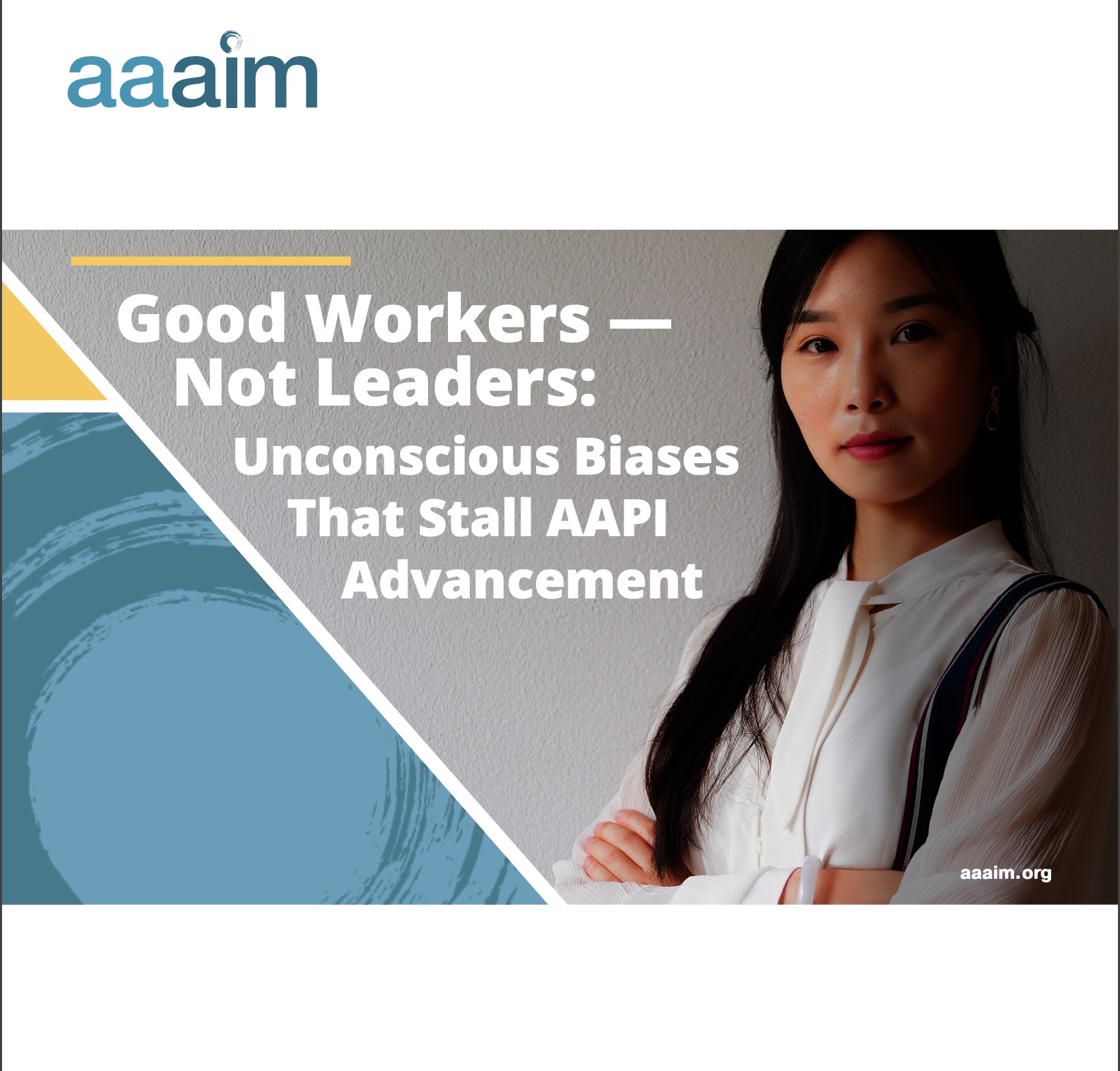
Nearly 93% agreed they [AAPIs] are considered diligent workers, and 85% agreed they were good with numbers. Yet, almost 70% believe that AAPI members are not perceived as good leaders. Nearly 60% agreed they face stereotypes that they don’t work well with others. And almost 40% agree that they aren’t considered good managers or strategic thinkers.
On a personal level, more than 90% believe that the bamboo ceiling has been a problem in their own career trajectory
Good Workers — Not Leaders: Unconscious Biases That Stall AAPI Advancement (AAAIM 2021)
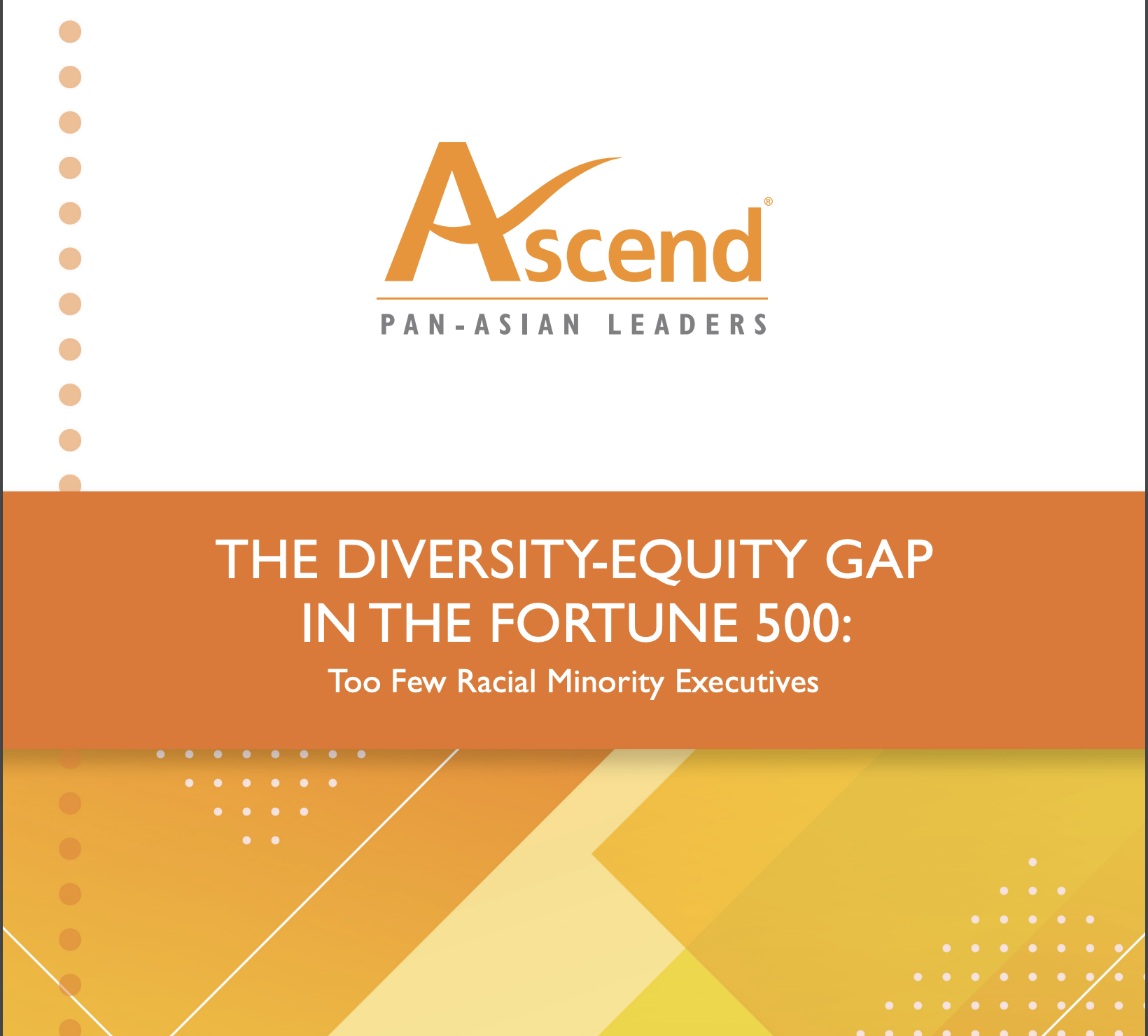
The most racially diverse Fortune 500 companies are also the least equitable in executive representation, according to a recent report from Ascend Foundation. The study also found a large gap between White and racial minority (Hispanics, Blacks, and Asians/Pacific Islanders) executive representation, pointing to ongoing and persistent glass ceilings and advancement challenges for minority men and women.
THE DIVERSITY-EQUITY GAP IN THE FORTUNE 500: Too Few Racial Minority Executives (Ascend 2023)
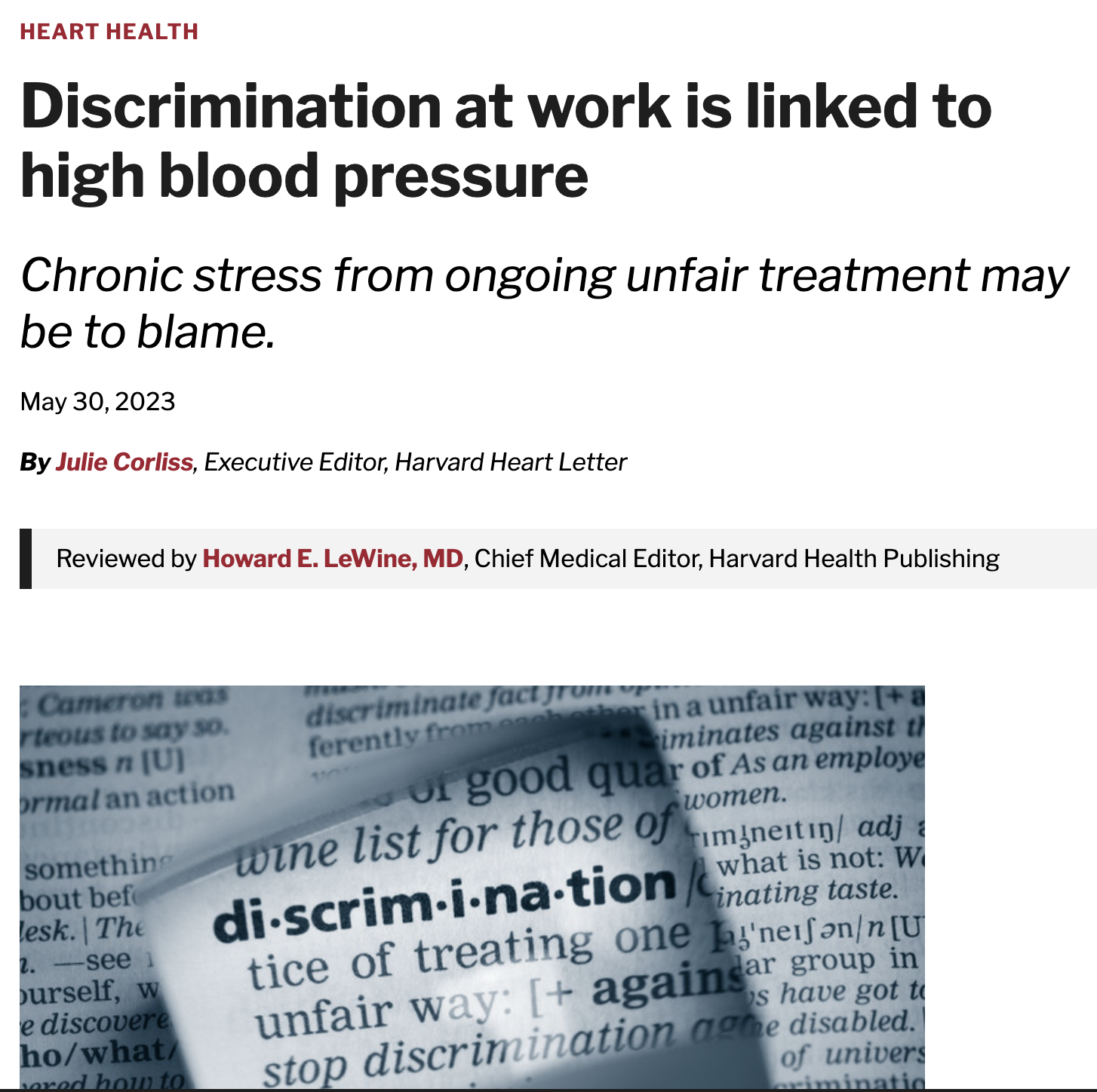
A 2023 study in the Journal of the American Heart Association found that people who reported high levels of discrimination on the job were more likely to develop high blood pressure than those who reported low levels of workplace discrimination.
Discrimination at work is linked to high blood pressure (Li, Matthews, Clausen, Rugulies 2023)
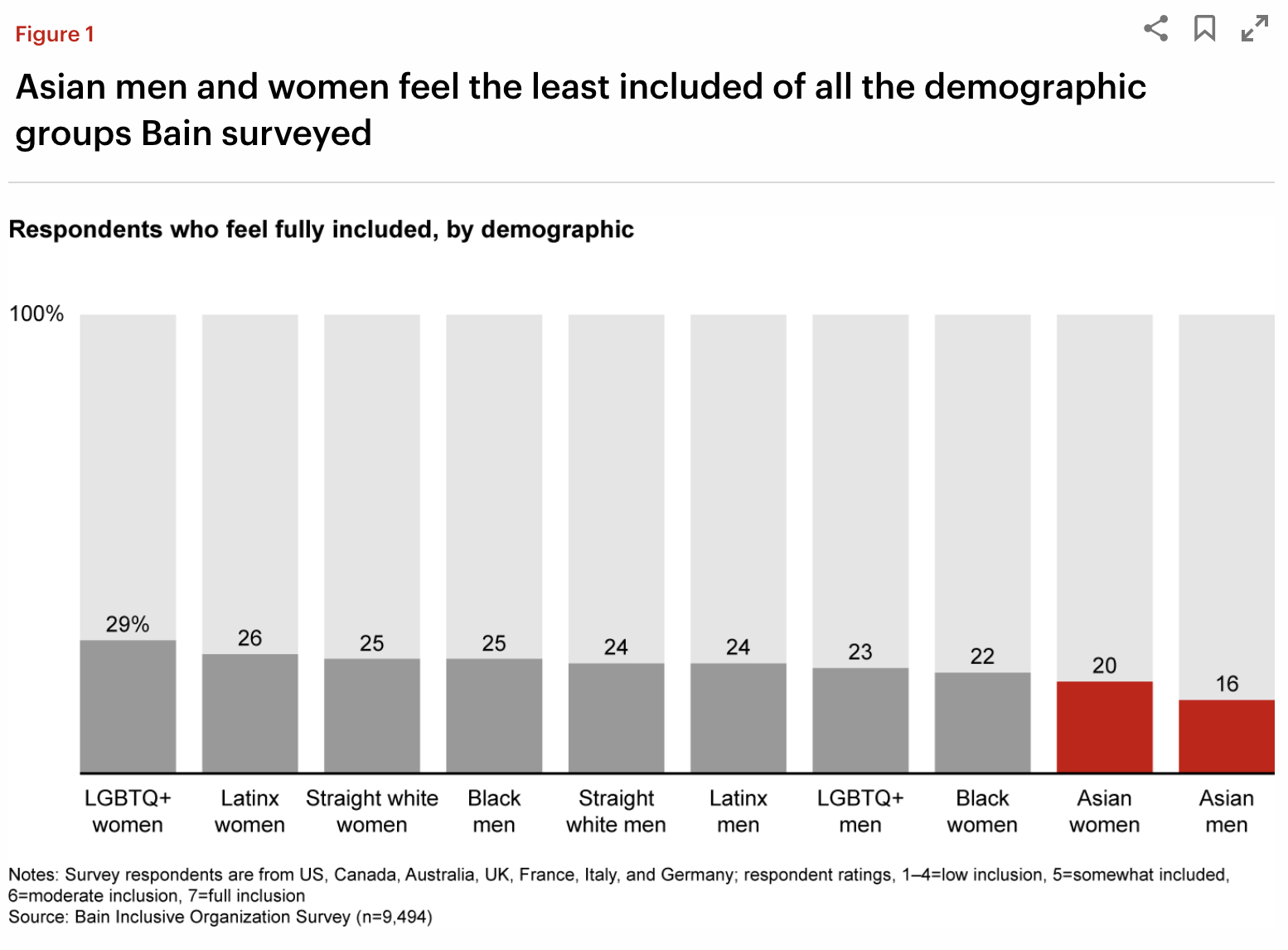
Among all demographic groups, Asians reported feeling the least included, with only 16% of Asian men and 20% of Asian women saying they felt fully included at work. These percentages are significantly lower than that for the third-lowest group, Black women, at 22%.
Greater Inclusion Can Help Asian Americans Crack the Bamboo Ceiling (Bain 2022)
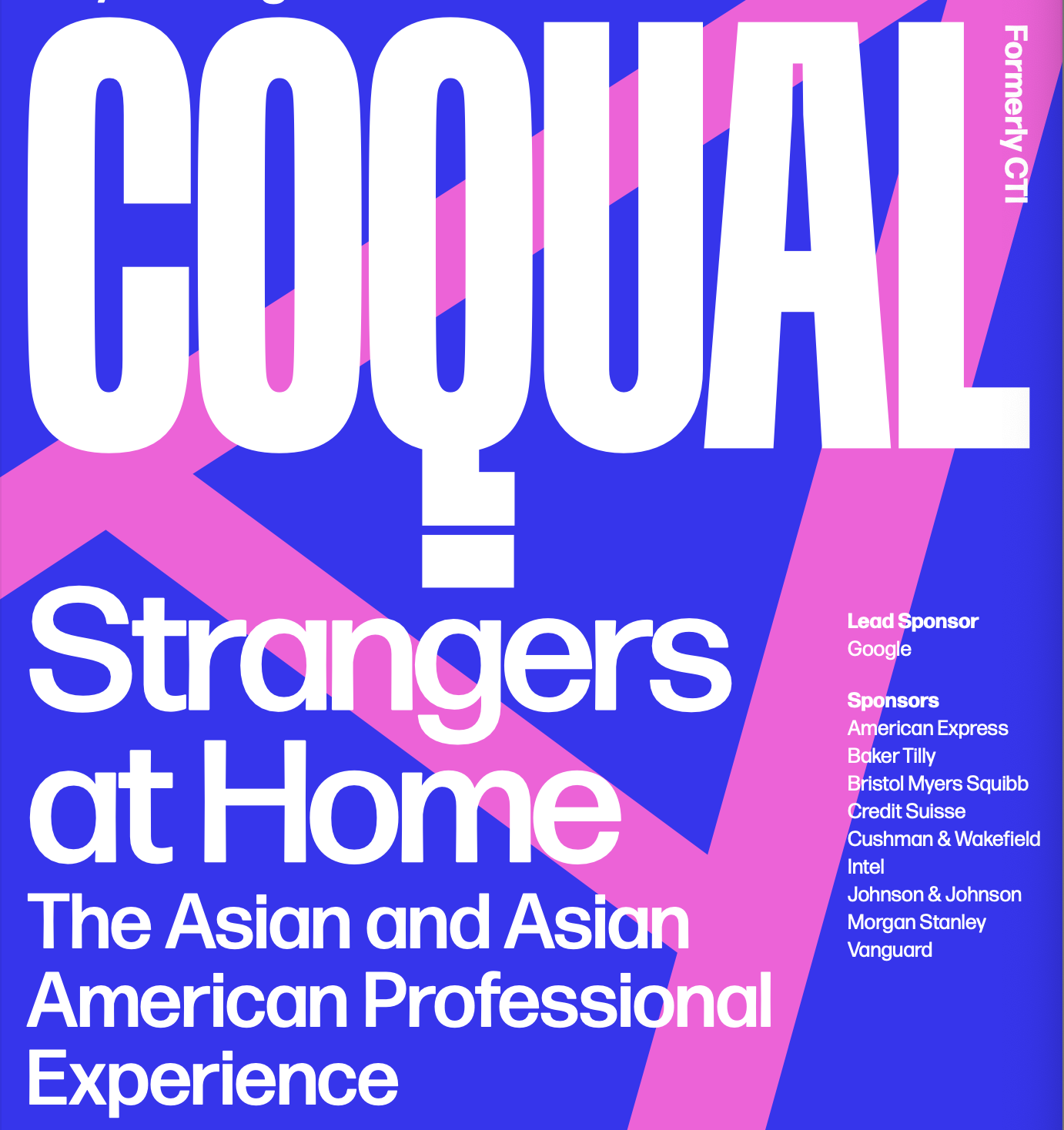
More than 36% of Asian and Asian American professionals say they have experienced racial prejudice at their current or former companies.
Asian and Asian American professionals are the least likely of any racial group surveyed (29%; compared to 44% of whites, 37% of Black professionals, 39% of Latinos) to say they have role models at their company, the least likely to say they have strong networks (17%), and least likely to have a sponsor (21%).
Strangers at Home. The Asian and Asian American Professional Experience (Coqual 2023)
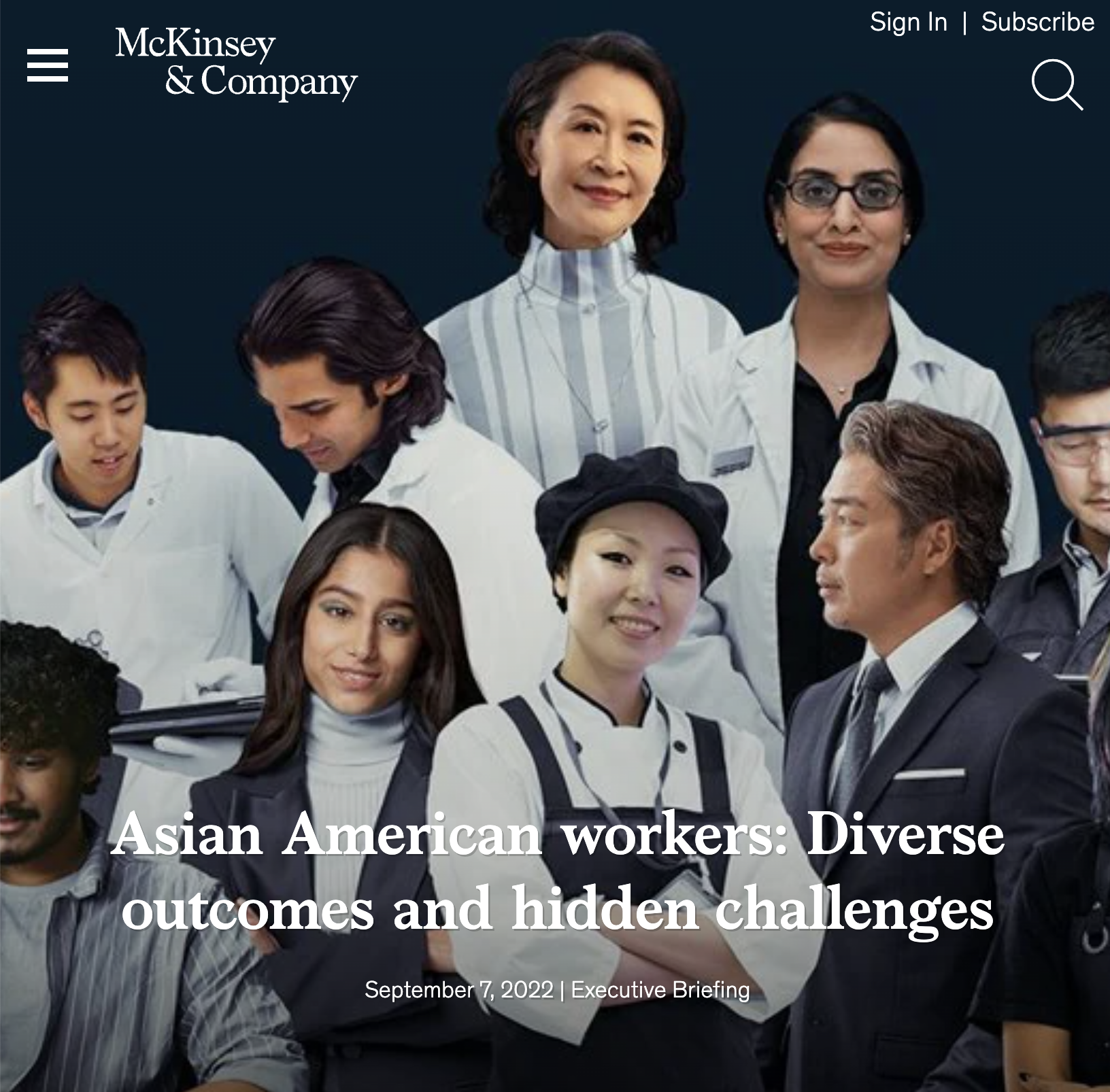
Asian Americans experience lower inclusion and receive less support at work than their White peers. Our research finds that Asian Americans perceive lower levels of fairness, feel less able to be themselves at work, and are less likely to report that their sponsors are effective at creating opportunities for them.
Asian American workers: Diverse outcomes and hidden challenges (McKinsey & Co. 2022)
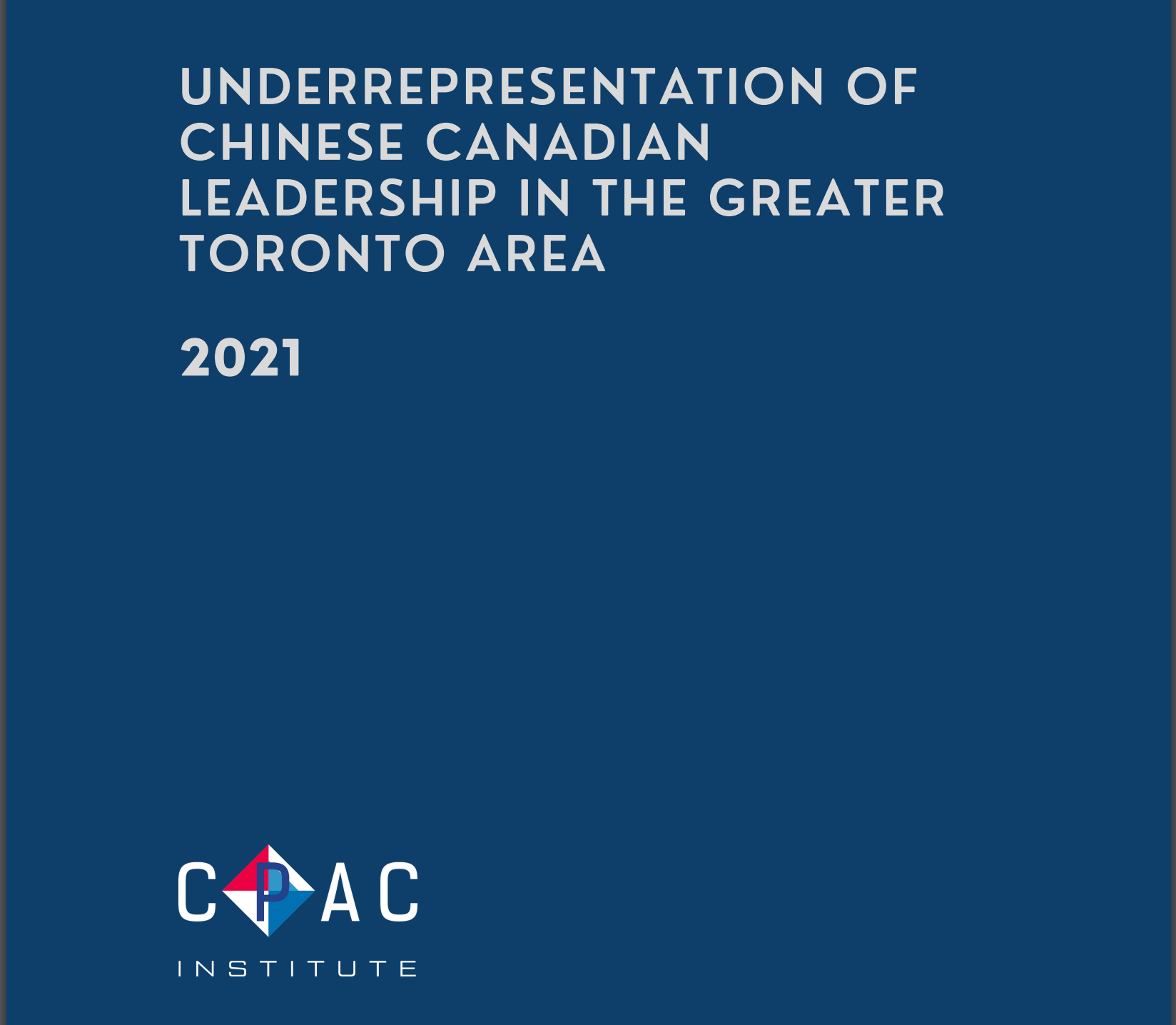
Chinese Canadians, representing 11.1% of the population in the GTA, are severely underrepresented in leadership positions in all eight sectors — only 2.17% of Tier 1 leaders, and 1.90% of Tier 2 leaders are of Chinese descent.
There is zero representation at the senior executive level in all the big accounting and law firms, or among the Directors or Associate Directors of Education in all 10 public and Catholic school boards.
Underrepresentation of Chinese Canadian Leadership in the Greater Toronto Area (CPAC 2021)
